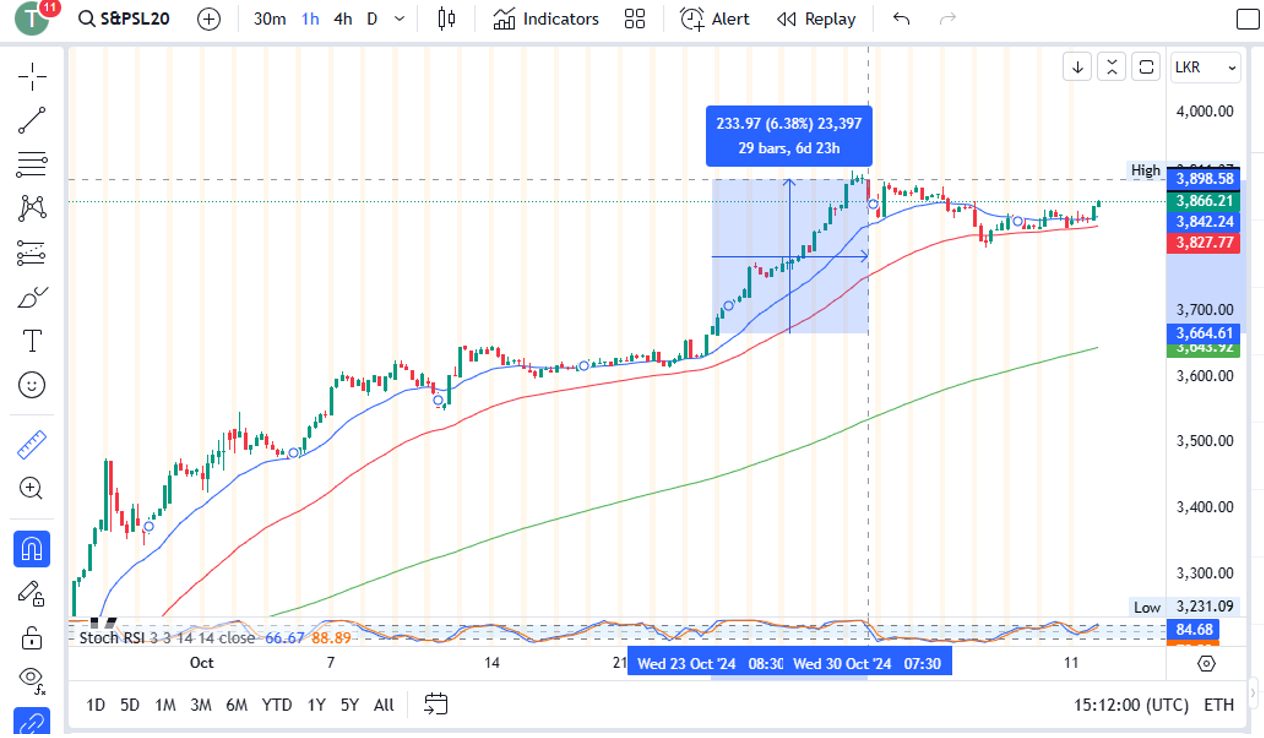CFD Trading In Sri Lanka



With one of the highest per capita incomes in South Asia, a developing economy, and rising internet saturation, CFD trading in Sri Lanka is growing in popularity.
In this beginner’s guide, we’ll walk you through the basics of CFD trading in Sri Lanka, from the different assets you can trade on the Colombo Stock Exchange (CSE) to the regulatory and tax environment. We’ll also look at an example trade on the S&P Sri Lanka 20 index.
Quick Introduction
- CFDs let you speculate on market movements without owning, say, shares in Sri Lanka Telecom. You exchange the difference in price between when you open and close the trade.
- With an initial cash outlay, known as margin, you can leverage trades to multiply potential results, amplifying both profit and loss, so risk management is crucial.
- The Central Bank of Sri Lanka (CBSL) handles financial regulation but does not specifically oversee CFD providers, so residents often use overseas brokerages.
- Taxes on CFD trading profits may apply, notably a capital gains tax at 10% on investment assets, payable to the Sri Lanka Inland Revenue (IR).
Best CFD Brokers In Sri Lanka
Using our firsthand tests, we’ve determined that these 4 CFD platforms are the best for day traders in Sri Lanka:
How Does CFD Trading Work?
A contract for difference (CFD) is a financial instrument that allows you to speculate on price movements of an asset – like shares in major Sri Lankan companies – without actually owning it.
In essence, a CFD is an agreement between you, the trader and your broker to exchange the difference in value from the trade’s opening to its closing.
By trading CFDs, you’re essentially betting on whether an asset’s price will go up or down.
What Can I Trade?
You can use CFDs to trade various markets, both in Sri Lanka and worldwide:
- Stock CFDs – Trade shares in popular Sri Lankan companies, such as Associated Motor Finance Ltd (AMF), Vidullanka PLC (VLL), and Maskeliya Plantation (MASK). You can also explore major international stocks from the US, UK, and other global markets for broader exposure.
- Index CFDs – Trade the S&P Sri Lanka 20 Index, which covers the top 20 Sri Lankan companies, or invest in global indices like the FTSE 100 and Dow Jones 30. Indices are popular with CFD traders looking to benefit from overall market movements instead of individual stocks.
- Forex CFDs – Trade currency pairs involving the Sri Lankan rupee (LKR), such as USD/LKR and EUR/LKR, or go for major currency pairs like EUR/USD and USD/JPY for higher liquidity which is key for many short-term trading strategies.
- Exchange-Traded Funds CFDs – Access ETFs with Sri Lankan exposure, like the iShares Frontier EM ETF or MarketDesk Focused US Dividend ETF. International ETFs also provide diversified exposure to different markets and sectors.
- Commodity CFDs – Trade Sri Lanka’s core commodities such as tea, tobacco, precious stones, and textiles, along with more widely available global commodities like gold, silver, and crude oil.
- Crypto CFDs – Speculate on digital assets like Bitcoin, Ethereum, and Tether for high-risk, fast-paced trading. Cryptocurrency CFDs are increasingly popular as global regulatory frameworks, including in Sri Lanka, begin to address digital assets.
Is CFD Trading Legal In Sri Lanka?
CFD trading is technically permitted in Sri Lanka, but it operates in a somewhat uncertain legal environment. Currently, no specific regulatory framework govern CFD trading for individual retail investors in Sri Lanka.
However, there are certain considerations and restrictions set by the Central Bank of Sri Lanka (CBSL), primarily aimed at safeguarding the foreign exchange market and limiting capital outflow.
Most Sri Lankan traders who engage in CFD trading do so through international brokers that accept clients from Sri Lanka. However, Sri Lanka has foreign exchange controls and restrictions on transferring funds abroad, especially during periods of economic crisis.
This can impact CFD traders looking to deposit or withdraw funds from international brokers, as they might face limitations or require special approvals for transactions with foreign entities.
While Sri Lanka does not offer regulatory protection specifically for CFD traders, international providers who operate in compliance with foreign regulatory bodies (eg FCA in the UK or ASIC in Australia) may provide additional safeguards.
This can include risk disclosures, negative balance protection, and segregated client funds, which are not mandated by Sri Lankan authorities but are offered under the broker’s home country regulations.
Is CFD Trading Taxed In Sri Lanka?
CFD traders should report trading profits and file a Capital Gains Tax (CGT) tax return to the Sri Lanka Inland Revenue no later than one month after the disposal of the investment asset.
Capital Gains Tax is typically levied at 10%. Quoted shares listed on the Colombo Stock Exchange are exempt from CGT levies.
Given the evolving regulatory and tax landscape in Sri Lanka, I recommend consulting a tax professional who can help ensure you meet your obligations while CFD trading.
A Trade Example
To show you how CFD trading in Sri Lanka really works, here is an example of a long CFD trade on the S&P Sri Lanka 20 index, designed to measure the performance of 20 of the largest and most liquid companies in the Sri Lankan equity market.
Trade Entry
With price action on the daily, 4-hour, and 1-hour timeframes in a long-term uptrend, I opted for the momentum bounce strategy, waiting for price action to bounce off the 20-day moving average before entering the CFD trade.
Dropping down to the 1-hour chart to get a tighter entry, I waited for the first bullish candle to close before entering the trade at 3,650.00 and setting my take profit order at 3,850.00.

As any experienced trader knows, you must protect your account. I always calculate the appropriate position size based on my risk management rules, never risking more than 1% of my account balance and setting a stop-loss order to manage potential losses.
After monitoring my trade closely on the 1hr, 4hr, and daily timeframes, my CFD trade played out as planned, and my take profit order kicked in, leaving me to exit the trade as planned.
Bottom Line
CFD trading is becoming increasingly popular in Sri Lanka as rising incomes and greater financial literacy encourage more retail investors to participate.
However, it’s crucial to remember leverage is a double-edged sword – both your potential profits and losses are multiplied. Only risk Sri Lankan rupees that you can afford to lose.
To get going, utilize DayTrading.com’s choice of the top CFD trading platforms.
Recommended Reading
Article Sources
The writing and editorial team at DayTrading.com use credible sources to support their work. These include government agencies, white papers, research institutes, and engagement with industry professionals. Content is written free from bias and is fact-checked where appropriate. Learn more about why you can trust DayTrading.com



